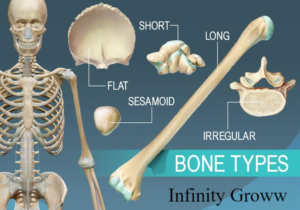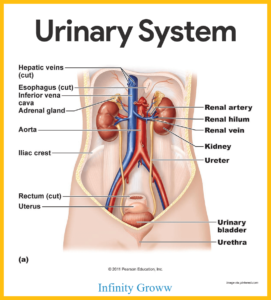Table of Content :
- Introduction
- Overview of the digestive system’s functions and components
- Function of the Digestive System
- Ingestion
- Mechanical Digestion
- Chemical Digestion
- Absorption
- Elimination
- Parts of the Digestive System and Their Functions
- Mouth
- Esophagus
- Stomach
- Small Intestine
- Liver
- Gallbladder
- Pancreas
- Large Intestine (Colon)
- Diseases Associated with the Digestive System
- Gastroesophageal Reflux Disease (GERD)
- Peptic Ulcers
- Inflammatory Bowel Disease (IBD)
- Irritable Bowel Syndrome (IBS)
- Celiac Disease
- Interesting Facts and Data
- Consumption of food in a lifetime
- Saliva production
- Length of the small intestine
- Stomach capacity
- Blood supply passing through the liver
- Gallstone prevalence
- Pancreatic cancer statistics
- Colorectal cancer statistics
- Conclusion
Introduction :

The digestive system is a fascinating network of organs and tissues that processes food, extracts nutrients, and eliminates waste from our bodies. It is a complex system with various functions and components. In this blog post, we will explore the functions of the digestive system, examine its main parts, and discuss common diseases associated with each part, along with interesting facts and data specific to India and the United States.
Function the Digestive System work :
Absolutely, here’s the expanded information on each of the points, including purpose, working, importance, role, and some interesting facts:
How Does the Digestive System Work?
- Ingestion:
- Purpose: Intake of food to provide the body with nutrients and energy.
- Working: Food enters the mouth, is chewed, and mixed with saliva to form a bolus.
- Importance: Initiates the digestion process by breaking down food mechanically and chemically through saliva’s enzymes.
- Role: Prepares food for further processing in the digestive tract.
- Facts: The average person eats about 30 tons of food in their lifetime.
- Mechanical Digestion:
- Purpose: Breaks down food into smaller particles to increase surface area for enzyme action.
- Working: Chewing in the mouth crushes and grinds food. Stomach’s muscle contractions churn and mix food.
- Importance: Increases the efficiency of chemical digestion.
- Role: Prepares food for chemical digestion by increasing its exposure to digestive enzymes.
- Facts: Human normally produce around 2,500 gallons of saliva in their lifetime.
- Chemical Digestion:
- Purpose: Breaks down complex molecules into simpler forms for absorption.
- Working: Stomach secretes hydrochloric acid and pepsin for protein breakdown. Pancreatic enzymes and bile in the small intestine further digest proteins, fats, and carbohydrates.
- Importance: Essential for converting nutrients into forms that can be absorbed and utilized by the body.
- Role: Enables the body to absorb nutrients necessary for various bodily functions.
- Facts: The stomach’s hydrochloric acid has a pH similar to battery acid.
- Absorption:
- Purpose: Extracts nutrients from digested food and delivers them to the bloodstream.
- Working: Small intestine’s villi and microvilli provide a large surface area for absorption.
- Importance: Nutrient absorption fuels the body’s energy, growth, and maintenance.
- Role: Facilitates the transfer of nutrients, including amino acids, vitamins, and minerals, into the bloodstream.
- Facts: The length of the small intestine is estimated to be around 7 meters (23 feet).
- Elimination:
- Purpose: Removes indigestible waste and excess materials from the body.
- Working: Undigested food moves into the large intestine where water and electrolytes are absorbed, forming feces.
- Importance: Prevents accumulation of waste materials and toxins in the body.
- Role: Cleanses the body and maintains a healthy balance of fluids and electrolytes.
- Facts: The average time for food to pass through the entire digestive system is about 24 to 72 hours.
Understanding these processes helps us appreciate the intricate functions of the digestive system, its vital role in nutrient extraction, energy production, and overall well-being.
Parts of the Digestive System and Their Functions :

Mouth:
- Initiates digestion through mechanical (chewing) and chemical (saliva’s enzymes) breakdown of food.
- Purpose: Begin breaking down food into smaller particles and initiating carbohydrate digestion.
- Role: Prepares food for further digestion in the stomach and intestines.
Esophagus:
- Muscular tube connecting mouth to stomach.
- Propels food using peristalsis, rhythmic muscle contractions.
- Purpose: Smooth passage of food to the stomach for further processing.
Stomach:
- Muscular organ that churns and mixes food with gastric juices.
- Secretes hydrochloric acid and pepsin for protein breakdown.
- Forms semi-liquid chyme for further digestion.
- Purpose: Further mechanical and chemical digestion, especially of proteins.
- Role: Acts as a temporary storage site and initiates protein digestion.
Small Intestine:
- Main site of digestion and nutrient absorption.
- Consists of duodenum, jejunum, and ileum.
- Villi and microvilli increase absorption surface area.
- Enzymes from pancreas and bile from liver further break down nutrients.
- Purpose: Absorption of nutrients (amino acids, fatty acids, vitamins, minerals).
- Role: Vital for nutrient assimilation and transfer to the bloodstream.
Liver:
- Produces bile, which aids in fat digestion and detoxifies blood.
- Stores nutrients, metabolizes substances, regulates blood sugar.
- Purpose: Bile production, detoxification, metabolic regulation.
- Role: Key organ for digestion, metabolism, and detoxification.
Gallbladder:
- Stores and concentrates bile produced by the liver.
- Releases bile into small intestine for fat digestion.
- Purpose: Enhance fat digestion and absorption.
- Role: Facilitates emulsification of fats and supports digestion.
Pancreas:
- Produces digestive enzymes for carbohydrate, protein, fat breakdown.
- Secretes bicarbonate ions to neutralize stomach acid.
- Purpose: Enzyme secretion for complete digestion.
- Role: Provides essential enzymes for nutrient breakdown.
Large Intestine (Colon):
- Absorbs water, electrolytes, some vitamins produced by gut bacteria.
- Solidifies remaining material into feces.
- Houses beneficial gut bacteria that ferment undigested carbohydrates.
- Purpose: Water absorption, gut flora maintenance.
- Role: Preparation of waste for elimination, gut microbiota support.
Understanding the functions of these digestive system components is crucial for comprehending the intricate processes that transform food into nutrients for energy, growth, and overall health.
Diseases Associated with the Digestive System :
- Gastroesophageal Reflux Disease (GERD):
- A chronic condition where stomach acid frequently flows back into the esophagus.
- Common symptoms: Heartburn, regurgitation, chest pain, difficulty swallowing.
- Causes irritation and damage to the esophagus lining over time.
- Treatment involves lifestyle changes, dietary adjustments, medications, and sometimes surgery.
- Peptic Ulcers:
- Open sores that develop on the inner lining of the stomach, small intestine, or esophagus.
- Most often caused by infection with Helicobacter pylori bacteria or long-term use of NSAIDs.
- Symptoms: Burning abdominal pain, bloating, nausea, vomiting, dark stool.
- Treatment includes antibiotics for H. pylori, acid-suppressing medications, and lifestyle changes.
- Inflammatory Bowel Disease (IBD):
- Collective term for chronic inflammatory conditions of the gastrointestinal tract.
- Main types: Crohn’s disease (can affect any part of the digestive tract) and ulcerative colitis (affects the colon and rectum).
- Symptoms: Abdominal pain, diarrhea, weight loss, fatigue, rectal bleeding.
- Autoimmune in nature; treatment aims to manage inflammation and maintain remission.
- Irritable Bowel Syndrome (IBS):
- A functional gastrointestinal disorder characterized by abdominal pain and altered bowel habits.
- Exact cause is uncertain, but factors like diet, stress, and gut sensitivity play a role.
- Symptoms vary widely among individuals, including diarrhea, constipation, bloating, gas.
- Management involves dietary changes, stress reduction, and symptom-specific medications.
- Celiac Disease:
- Autoimmune disorder triggered by the ingestion of gluten, a protein found in wheat, barley, and rye.
- Gluten consumption damages the lining of the small intestine, impairing nutrient absorption.
- Symptoms: Digestive issues, fatigue, weight loss, skin rash, joint pain.
- Treatment: Lifelong adherence to a strict gluten-free diet.

These digestive system disorders can have varying impacts on individuals’ lives, ranging from discomfort to more severe complications. Understanding their causes, symptoms, and treatment options is crucial for early diagnosis and effective management.
- Conclusion:
- The digestive system is a remarkable and intricate system responsible for the digestion, absorption, and elimination of food. Understanding its functions, intriguing facts, and diseases associated with it can help us appreciate the complexity of our bodies.
- While the prevalence of digestive disorders may vary between India and the United States, maintaining a healthy lifestyle, seeking medical advice when needed, and promoting awareness about digestive health are vital for overall well-being.







